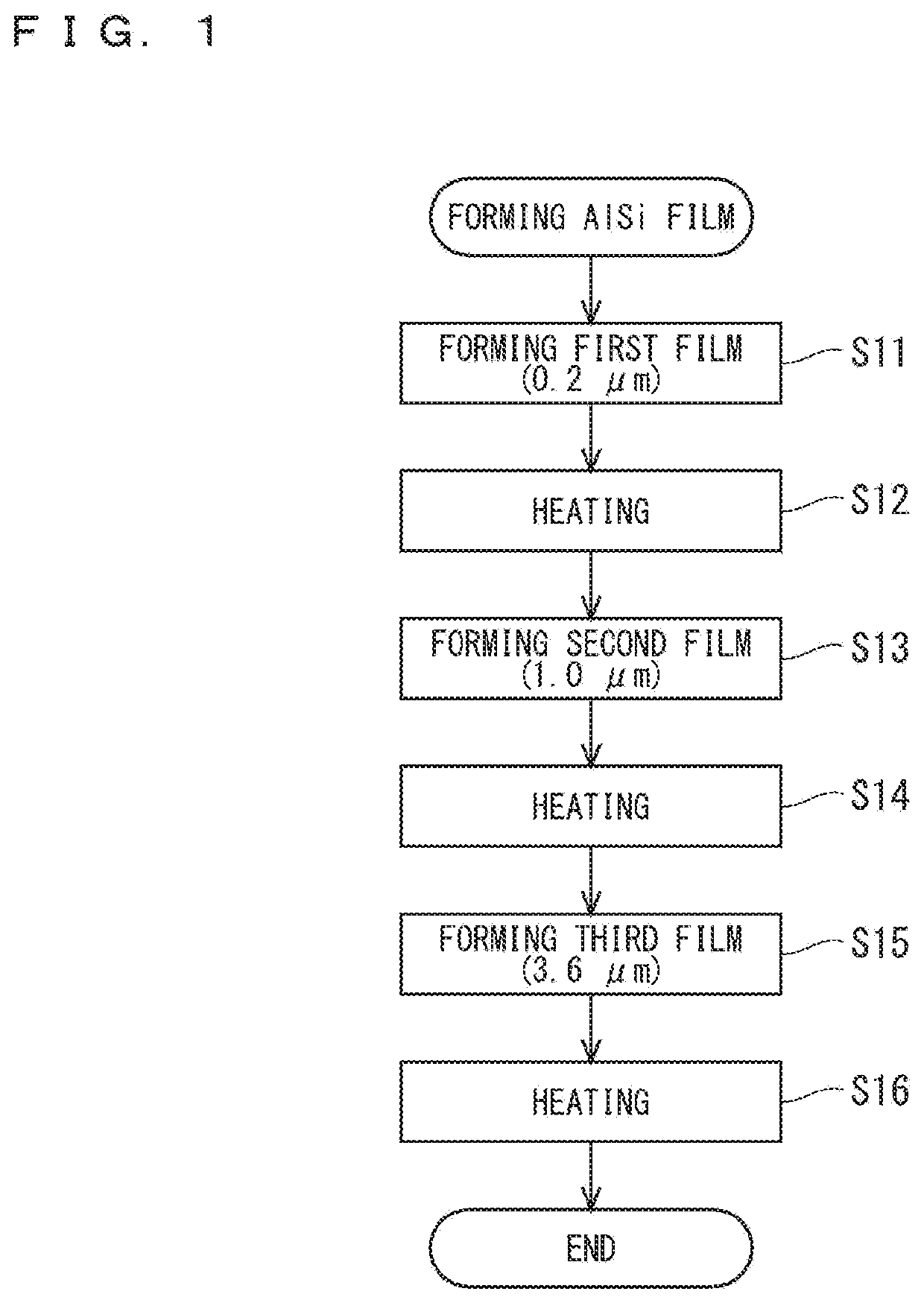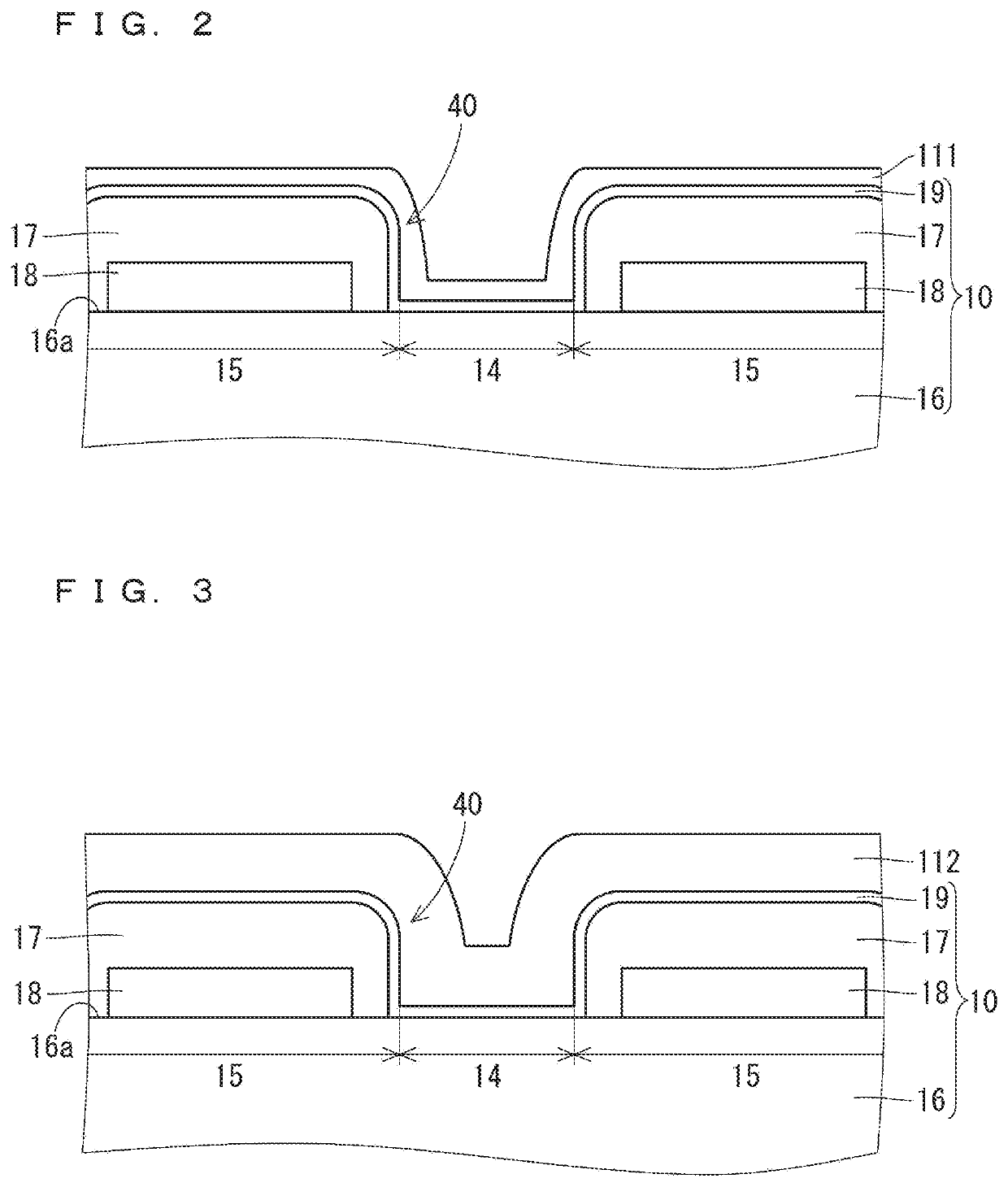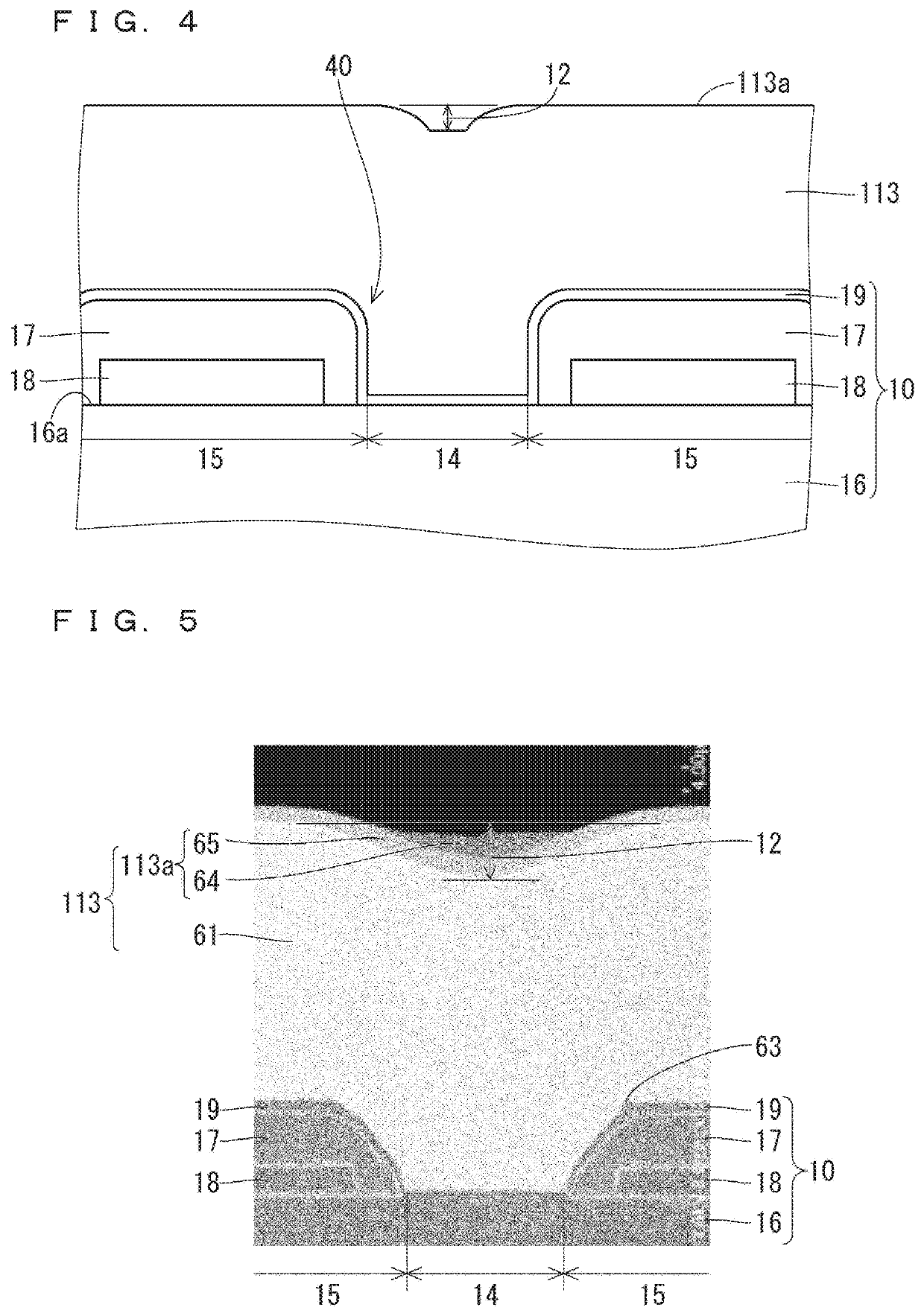Method for forming aluminum film
- Summary
- Abstract
- Description
- Claims
- Application Information
AI Technical Summary
Benefits of technology
Problems solved by technology
Method used
Image
Examples
Embodiment Construction
[0025]FIG. 1 is a flowchart illustrating a method for forming an aluminum film according to a preferred embodiment of the present invention. The material of the aluminum film is aluminum or an aluminum compound. An aluminum film of AlSi is formed in the preferred embodiment. The aforementioned material is used as a target to be sputtered, and AlSi is used for instance. The preferred embodiment employs normal sputtering, which is a type of sputtering, and employs a substrate-to-target distance of, for instance, 45 mm. The preferred embodiment describes forming an aluminum film having high flatness, without employing a long-throw sputtering method.
[0026]Step S11 is forming a first film. More specifically, the first film is formed by sputtering the target onto a substrate, which will be described later on. Step S12 is reflowing the first film by heating the first film. As such, steps S11 and S12, together, can be referred to as the first reflow sputtering.
[0027]Step S13 is forming a se...
PUM
| Property | Measurement | Unit |
|---|---|---|
| Length | aaaaa | aaaaa |
| Length | aaaaa | aaaaa |
| Thickness | aaaaa | aaaaa |
Abstract
Description
Claims
Application Information
 Login to View More
Login to View More - R&D Engineer
- R&D Manager
- IP Professional
- Industry Leading Data Capabilities
- Powerful AI technology
- Patent DNA Extraction
Browse by: Latest US Patents, China's latest patents, Technical Efficacy Thesaurus, Application Domain, Technology Topic, Popular Technical Reports.
© 2024 PatSnap. All rights reserved.Legal|Privacy policy|Modern Slavery Act Transparency Statement|Sitemap|About US| Contact US: help@patsnap.com










